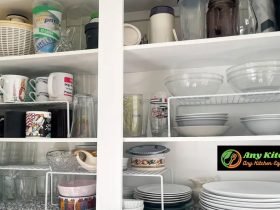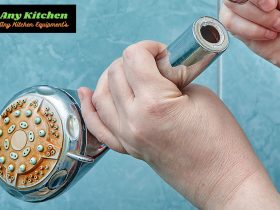Keeping your kitchen chair upholstery clean and well-maintained is essential for maintaining a hygienic and visually appealing dining area. Whether you’re dealing with spills, stains, or general dirt and grime, knowing how to effectively clean your kitchen chair upholstery can help prolong its lifespan and keep it looking fresh. In this guide, How to clean kitchen chair Upholstery. We will explore various methods and techniques to ensure that your kitchen chair upholstery remains clean, sanitized, and inviting for your family and guests.
How to Clean Upholstery Chairs Without a Machine
If you don’t have access to a machine for cleaning upholstery chairs, don’t worry! There are still effective ways to clean them using simple household items. Here’s a step-by-step guide on how to clean upholstery chairs without a machine:
- Vacuum the chair: Begin by thoroughly vacuuming the upholstery chair to remove loose dirt, dust, and debris. Use a brush attachment to gently agitate the fabric and lift any particles trapped in the fibers.
- Check the cleaning instructions: Before proceeding, check the manufacturer’s cleaning instructions or tags attached to the chair for any specific cleaning recommendations or restrictions.
- Prepare a cleaning solution: Mix a solution of mild dish soap or laundry detergent with warm water in a bucket or bowl. Ensure the solution is well-diluted and not too soapy.
- Test a hidden area: Test the cleaning solution on a small, inconspicuous area of the upholstery chair to check for any adverse reactions or color fading. If there are no issues, you can proceed with cleaning the entire chair.
- Spot clean stains: Dip a clean, white cloth or sponge into the cleaning solution and gently blot any stains or soiled areas on the chair. Avoid rubbing the fabric vigorously, as it can cause the stain to spread or damage the fibers.
- Clean the entire chair: Dip the cloth or sponge into the cleaning solution, wring out any excess moisture, and gently scrub the entire upholstery chair in a circular motion. Pay extra attention to heavily soiled areas.
- Rinse with clean water: Dampen another cloth or sponge with plain water and go over the chair to remove any soap residue. Wring out the cloth frequently and continue until the upholstery feels clean and soap-free.
- Absorb excess moisture: Use a clean towel or absorbent cloth to blot the upholstery and remove excess moisture. Press the cloth firmly against the fabric to soak up as much water as possible.
- Allow to air dry: Place the chair in a well-ventilated area and allow it to air dry completely. Avoid direct sunlight or heat sources, as they can cause the fabric to fade or shrink.
- Fluff and restore: Once the upholstery is dry, gently fluff the fabric with your hand or a soft brush to restore its texture and appearance.
By following these steps, you can effectively clean your upholstery chairs without the need for a machine. Remember to always test any cleaning solution on a hidden area first and proceed with caution to avoid damaging the fabric.
How to Clean Fabric Dining Chairs With Baking Soda
Cleaning fabric dining chairs with baking soda is a natural and effective method that can help revive and refresh the upholstery. Baking soda, also known as sodium bicarbonate, is a versatile cleaning agent with mild abrasive properties and deodorizing capabilities. Here’s how you can clean fabric dining chairs using baking soda:
Start by vacuuming the chairs to remove loose dirt, crumbs, and debris from the fabric. This step will ensure that you’re working with a clean surface.
Next, create a paste by mixing baking soda with a few drops of water until you achieve a thick consistency. The paste should be easy to spread but not too runny.
Using a soft brush or a cloth, apply the baking soda paste to the stained or soiled areas of the fabric dining chairs. Gently massage the paste into the fabric, focusing on the areas that require extra attention.
Allow the baking soda paste to sit on the upholstery for about 15-20 minutes. This will give the baking soda time to absorb odors, break down stains, and lift dirt from the fabric fibers.
After the designated time has passed, use a clean cloth or a soft brush to gently scrub the fabric. Work in circular motions, paying close attention to the areas where the baking soda paste was applied.
Finally, remove the baking soda residue by vacuuming the chairs once again or by using a clean, damp cloth to wipe away any remaining residue.
How to Clean Upholstered Chairs Naturally
Cleaning upholstered chairs naturally is a simple and eco-friendly process. Start by vacuuming the chairs to remove loose dirt and debris. For spot cleaning, mix equal parts water and vinegar or mild dish soap, and gently blot the stains with a clean cloth. To freshen the upholstery, sprinkle baking soda over the fabric and let it sit for a few hours before vacuuming it off. Alternatively, steam cleaning can effectively remove dirt and sanitize the upholstery. Finish by allowing the chairs to air dry completely. These natural cleaning methods will help maintain the cleanliness and longevity of your upholstered chairs without the use of harsh chemicals.
What is the Best Way to Clean an Upholstered Chair?
The best way to clean an upholstered chair depends on the fabric type and the specific cleaning needs. However, a general approach includes vacuuming the chair to remove loose dirt, spot-cleaning stains with a mild detergent or upholstery cleaner, and gently scrubbing the entire chair with a diluted cleaning solution. Rinse off any remaining residue and allow the chair to air dry completely.

It’s important to check the manufacturer’s cleaning instructions and perform a spot test on an inconspicuous area before proceeding. For delicate or heavily soiled chairs, it may be best to seek professional cleaning services to ensure optimal results and avoid potential damage to the upholstery.
How Do You Clean Dining Room Chair Seats?
Assuming you mean the upholstered seats of dining room chairs, you should start by vacuuming the seat to get rid of any surface dust and debris. You could wish to shampoo the seat with a basic upholstery cleaner if it is quite soiled.
After cleaning the seat, you should apply for fabric protection. Future spills and stains will be repelled by this.
Conclusion
Properly cleaning kitchen chair upholstery is essential for maintaining a clean and hygienic dining space. Regular vacuuming, prompt stain removal, and the use of suitable cleaning solutions are key steps in keeping upholstery looking its best. It is important to follow manufacturer guidelines and conduct spot tests to prevent any potential damage to the fabric. Natural cleaning methods, like using baking soda or vinegar, can be effective and eco-friendly options. Allowing sufficient drying time and proper ventilation ensures the removal of any odors. By following these cleaning techniques, you can ensure that your kitchen chair upholstery remains fresh, inviting, and ready for comfortable dining experiences.
Frequently Asked Questions
How do you clean upholstered kitchen chairs?
To clean upholstered kitchen chairs, start by vacuuming to remove loose dirt and debris. Spot clean any stains using a mild detergent or upholstery cleaner. Gently scrub the upholstery with a cloth or sponge, then rinse and allow to air dry.
What is the best way to clean fabric dining room chairs?
The best way to clean fabric dining room chairs is by vacuuming to remove loose debris, followed by spot-cleaning any stains with a mild detergent or upholstery cleaner. Gently scrub the fabric, rinse off any residue, and allow the chairs to air dry thoroughly.
What do you clean an upholstered chair with?
Half a cup of warm water and one cup of white vinegar should be combined. Use the solution to dampen a microfiber towel and blot spots. Then, combine some warm water with a moderate dishwashing agent, such as Dawn, and blot the area once more with a clean cloth. Rinse any soap residue with clean water and a fresh piece of cloth.










Leave a Reply